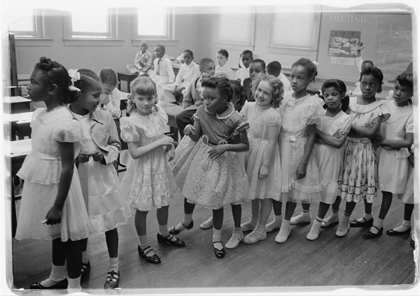
Separate and Unequal Schools after Brown v. Board of Education
A new report by the University of California Los Angeles’ Civil Rights Project/Proyeto Derechos Civiles examines the change in school demographics in the wake of the 60th anniversary of the Brown v. Board of Education decision. Since the 1954 Brown decision, there has been a 30% drop in the number of white students, whereas the number of Hispanic students has quadrupled. Currently, the two largest U.S. regions, the South and the West, are comprised of more minority than white students – with Latinos making up the largest group in the South, followed by African-Americans; in the West, African-Americans are the largest group of students. Critics assert that although the Brown decision challenged the legitimacy of separate but equal schools and significant progress has been made in that regard, schools are still segregated in some areas. For example, the South, which still remains less segregated than it was pre-Brown, has lost some of the progress it made since 1967. Additionally, segregation in schools for Latinos is the worst in the West, where segregation has grown since the 1960s. The gains that were made as a result of the Brown decision have been detracted by remaining problems like separation and inequality in schools. These problems are the worst in minority and poor communities.
Some key findings of the report are as follows:
- Blacks are the most segregated in schools in the Northeast
- Latinos are the most segregated in California schools
- In suburban schools, Latinos are more segregated than blacks
- Black and Latino students attend schools with majority of poor children significantly more than white and Asian students who tend to attend schools with middle class students more often
- School segregation is its highest in metropolitan cities
- New York, Illinois, and California segregate black students more than any other states
Patrice Garnette, Joint Center Graduate Scholar, The George Washington University Law School

